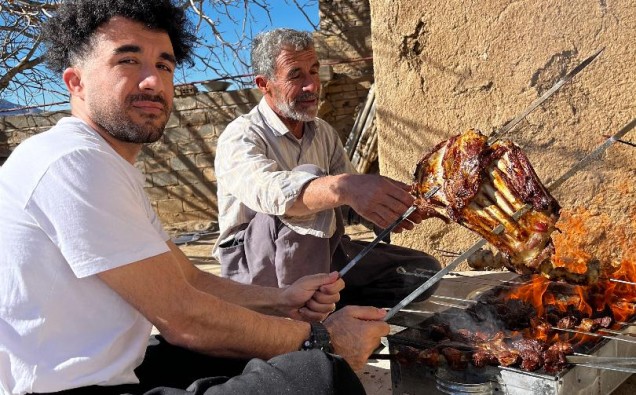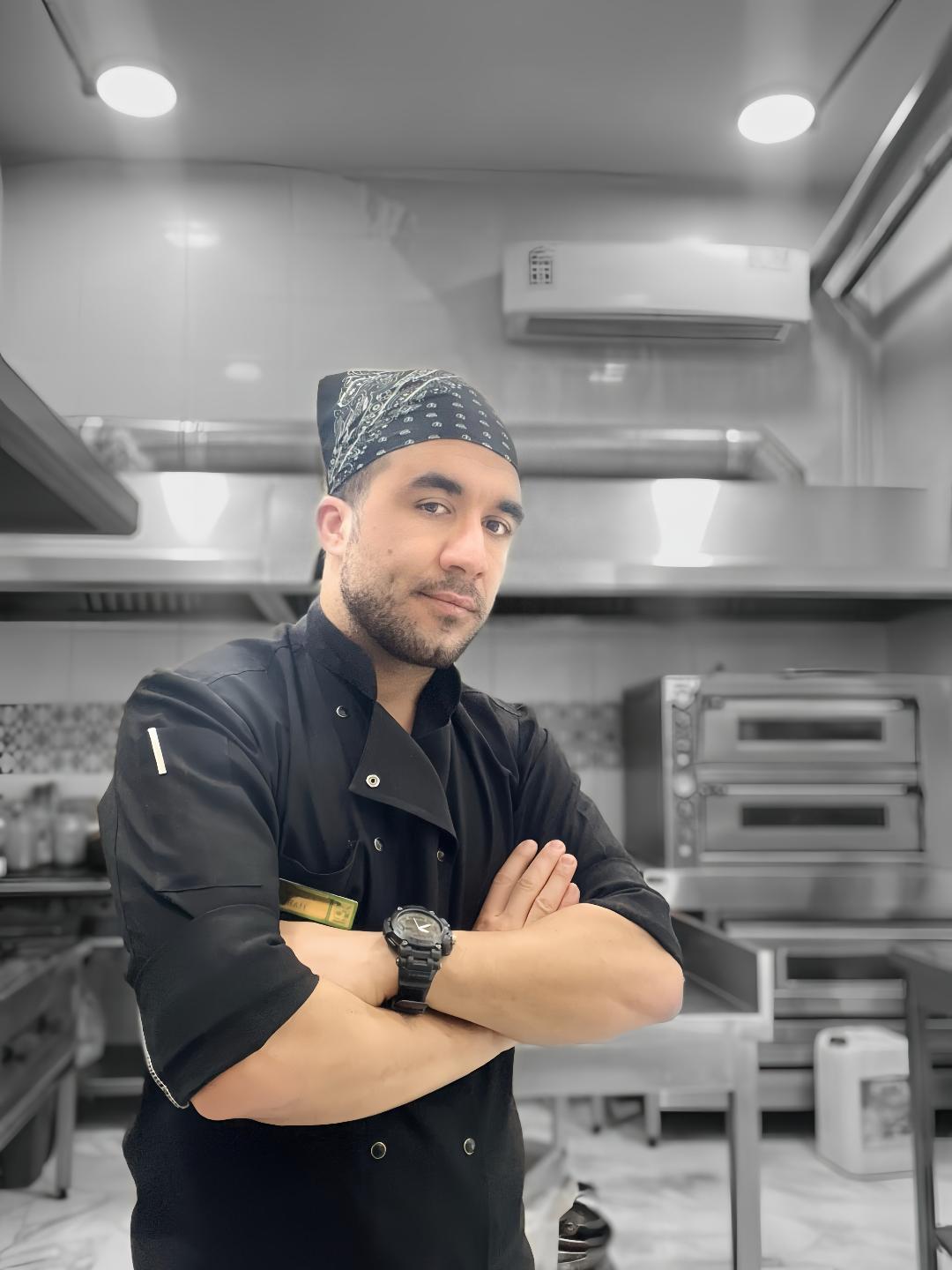Chef Habib Beiranvand (Instagram A/c: chef_beyranvand96 ) hails from Khorramabad and the Lorestan region. He was familiar with cooking and making several kinds of kebabs since he was a child. His interest in food began when his father taught him how to cook and create kebabs when he was a little kid. He moved to Tehran when he was 21 years old and began working as a waiter in a restaurant. However, he enjoyed cooking and liked to use Iranian spices to make kebabs and other dishes. He was able to begin cooking professionally and immigrate to Oman after a year of arduous and hard work. During his three years working in Oman, he succeeded in the restaurant and hotel industry with the assistance of Engineer Suheil Khazari, and together they established the Fletcher Burger brand. He currently works for this brand as a chef.
Q.) Tell us about your Iranian culture, your memories of family dinners and cooking experiences with your grandparents?
Chef Habib: Iran is a huge country that is home to people of many races. One of Iran’s oldest ethnic groups are the Lors, who reside in the Zagros Mountains. Red meat is at the top of the food pyramid in our culture. The Lors and Laks are well-known in Iran because they prefer lamb and goat kebabs. Jigarpage, Chenjeh kebabs, and Bakhtiari kebabs are among the most delectable foods in the Iranian Zagros. My father taught me how to make succulent, flavorful kebabs. In terms of grilling meat, my father is a master. We also use saji bread, which my mother makes by combining the dough and cooking it on a saj made of steel. It smells amazing when you eat it, and it goes well with kebabs. I can state that Chelo Gosht (rice and goat stew), one of the well-known meals I learned from my mother, is among the tastiest food served in Iranian restaurants.
Q.) In what way would you describe your cooking?
Chef Habib: This is how I would characterize my cooking: I always imagine what the cuisine I serve to customers should be like when I eat at a restaurant. I appreciate eating the meals they send me because it makes me feel good about the taste and the cost. Through my meals, I constantly attempt to express love and happiness to my customers.
Q.) Which Persian ingredient is your favorite to use and why?
Chef Habib: One of my favorite Iranian meal combinations is Tarkhineh. It is prepared by cooking ground wheat that has been soaked in turmeric and sweet sheep’s milk. Sheep stomach is used to make the delectable and scrumptious Tarkhineh stew and soup. We particularly make them during the colder fall and winter months.
Q.) Describe the significance of Iranian tea in Iranian culture.
Chef Habib: I spoke with Iranians about our culinary culture today. Particularly among the inhabitants of the Zagros Mountains, tea is one of the oldest hot beverages in Iran. We use mountain tea, which has therapeutic qualities, in addition to black tea.
Q.) What food best evokes memories of your childhood or of your home, in your opinion?
Chef Habib: One of the dishes that constantly reminds me of my early years is the filling and tasty vegetable stew, whose aroma permeates the entire house. One of my favorite meals is Ghormeh stew, which is prepared with chopped veggies, red beans, and fresh red meat and served with authentic Iranian rice.
Q.) Where would you advise someone to eat if they were visiting Oman or Iran for the first time?
Chef Habib: I suggest that my friends who are travelling to Iran visit the beautiful province of Lorestan in western Iran and enjoy a variety of stews and kebabs. For those who are visiting Oman, I suggest the stunning city of Salalah, the well-known Omani halva, and meals like Saudi rice, kabseh, and biryani.
Q.) Give a brief overview of Persian cuisine. What makes it unique, and what are some must-try Persian dishes?
Chef Habib: Due to the usage of regionally specific spices in the east, Iranian cuisine can be considered truly unique. Foods from the north of Iran, which I consider to be the birthplace of all Iranian cuisine, are distinctive because they are flavored with spices and aromatic herbs. It’s fascinating to learn about the use of delicious and fiery spices in southern Iran. In general, Iran has a distinct culinary culture. Lastly, I suggest you try the following dishes: Tarkhineh stew, Khorramabad chicken liver, Kermanshahi kebab rib, Bakhtiari kebab, and Kermanshahi stew.
Q.) What is your favorite dish to prepare—Persian or Omani—and why?
Chef Habib: The well-known Khorramabad Jigar Page, made with fresh liver and occasionally sheep’s kidneys, is my favorite meal to prepare! This is due to the fact that I have happy childhood memories of this dish.
Q.) How has Persian cuisine changed throughout time?
Chef Habib: Iran is a huge country with a wide variety of culinary traditions. Let’s begin with Iran’s southern region. The spicy food of nations like Pakistan and others that border the Arab world has evolved. The flavor and consistency of Iranian cuisine have not altered much throughout time in the north of Iran, which is, in my opinion, the birthplace of Iranian cuisine. However, I can affirm that the Lorestan people’s culture has not changed.
Q.) Any advice for aspiring chefs.
Chef Habib: I would advise you to always cook with love and enthusiasm. If you are persistent and have an open mind, you may make your nation’s cuisine renowned worldwide.
By: Rida Khan (Aviation Author)
Instagram A/c : aviationauthor.ridakhan




















